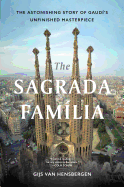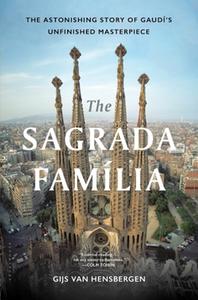
 In the historical context of church construction--in which France's Strasbourg Cathedral took almost 500 years to finish--Antoni Gaudí's Basilica and Expiatory Church of the Holy Family, still being built after 135 years, is just a piker. As Gijs van Hensbergen paraphrases Gaudí, "With a client as patient as God, what was a mere 150 years?" Van Hensbergen (Guernica), an art historian and television commentator, has already written a biography of Gaudí, so his illustrated The Sagrada Família is more of a study of the building itself, including the history of its inspiration and construction while Spain suffered through the Spanish-American War, the Spanish Civil War, World War I, World War II and the oppressive Franco dictatorship. With more than four million visitors a year, the Sagrada Família is one of Europe's most popular attractions. Visitor entry fees have supported the ongoing construction costs--what van Hensbergen drily calls "the all-time record for the modern-day phenomenon of crowdfunding."
In the historical context of church construction--in which France's Strasbourg Cathedral took almost 500 years to finish--Antoni Gaudí's Basilica and Expiatory Church of the Holy Family, still being built after 135 years, is just a piker. As Gijs van Hensbergen paraphrases Gaudí, "With a client as patient as God, what was a mere 150 years?" Van Hensbergen (Guernica), an art historian and television commentator, has already written a biography of Gaudí, so his illustrated The Sagrada Família is more of a study of the building itself, including the history of its inspiration and construction while Spain suffered through the Spanish-American War, the Spanish Civil War, World War I, World War II and the oppressive Franco dictatorship. With more than four million visitors a year, the Sagrada Família is one of Europe's most popular attractions. Visitor entry fees have supported the ongoing construction costs--what van Hensbergen drily calls "the all-time record for the modern-day phenomenon of crowdfunding."
As if an archi-tourist himself, van Hensbergen shapes his book through the eyes of a visitor--complete with standing in a multilingual queue alongside the typical "tourist shops selling plastic rubbish, the Swarovski bling, the creamy kitsch ceramics by Lladró... and the inevitable Irish pub offering the craic." However, he is no gawking acolyte come to worshipping Barcelona's Frank Lloyd Wright. With an ecumenical scholar's background, van Hensbergen positions Gaudí among the architects and artists of his time, like the modernism of Manet and the Catalan Art Nouveau movement with its emphasis on craft, material and decoration. The son of a small forge shop smithy, Gaudí grew up watching chunks of steel be hammered into useful and beautiful shapes.
The basilica is mathematically built on modules defined by the 7.5-meter width of an aisle, with accompanying nave, transept and vault dimensions being multiples of the base aisle. Trained in fundamental architectural and engineering skills, Gaudí, however, preferred to design and build conceptually by touch--more of a field architect than one bound by drawings and specifications. Not until 20 years after the first stone of the Sagrada Família was placed did he finally draw up plans and make models for the whole project. And a good thing, too. Unmarried and obsessed with his crown jewel, he lived alone and "increasingly resembled a hermit, slightly disheveled, his legs bandaged against the cold." It was in this condition that he was killed in a horse tram accident on his way to church for his daily confession. Bystanders thought he was a homeless bum and left him in the streets without medical help. His masterpiece still had 100 years of construction ahead until its expected completion in 2026. In the larger scheme of things, what's another nine years--or more? --Bruce Jacobs, founding partner, Watermark Books & Cafe, Wichita, Kan.
Shelf Talker: With the sharp eye of both an art historian and Gaudí scholar, Gijs van Hensbergen takes readers on a tour of the Sagrada Família.

